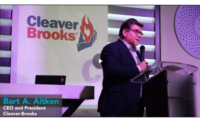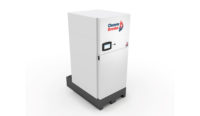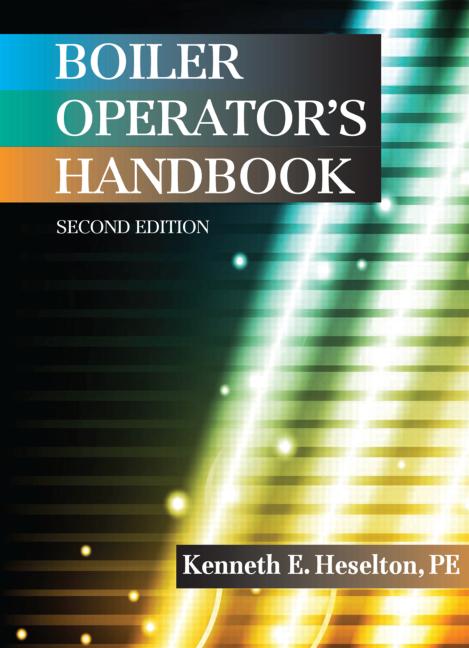
New EX Technology teams with CFD modeling to aim for tomorrow's standard.
The recent advancements in computational fluid dynamics (CFD) and other analytical design techniques have set the stage for the development of cutting-edge technology that will soon challenge the age-old design standard and lay the foundation for the next generation of firetube boilers.
Since the 1950s, boilers have been built with the 5-sq-ft/4-pass design standard in mind. During the past half-century, there have been innovations in boiler designs, controls, and burner technology, but none has really revolutionized the industry.
With ready access to advanced design CFD, a group of design engineers at Cleaver-Brooks recently asked the question, “If we were to optimize a firetube boiler for combustion and thermal performance, starting with a blank sheet of paper, what would be the result?”
With that question in mind, the engineers embarked on a mission to develop boiler technology that sets a new standard for operating efficiency. They knew that to meet their goal of developing truly innovative technology, they would have to center their efforts on extending the heat transfer surface and redesigning the furnace.
Boilers traditionally have been manufactured using plain tubes with multiple passes to capture convective heat transfer. When gases travel through the middle of a plain tube, a fluid boundary layer builds up that causes an increased resistance to the heat transfer.
Design engineers have long known that extending the heat transfer surface would decrease the resistance in the middle of the tube; however, they were limited by the availability and high cost of technology to perform the sophisticated simulations necessary.
ADVANCED DESIGN SOFTWARE PROPELS PROGRESS
Within the past three years, several advanced design software programs have become available and more affordable, enabling engineers to perform extremely complex calculations critical to developing the next generation of boilers.Using advanced CFD modeling, engineers at Cleaver-Brooks began focusing their efforts on re-engineering the heat transfer of the boiler tubes, where 30% to 40% of the total heat transfer takes place. The engineers strived to develop the right cross-section for optimal heat transfer performance. They continuously made changes to the number of ribs, the angle of the ribs, and the height and width of the ribs.
Having an extended heating surface lessens the number of required tubes, which gave the design engineers the flexibility to improve the combustion system, where 60% to 70% of the total heat transfer occurs. Their objective was to optimize the furnace geometry for stable combustion and lower emissions.
During their six months of analysis utilizing a number of sophisticated research techniques, including advanced CFD modeling and finite element analysis, the engineers examined a number of variables. They defined different boundary conditions and loads and fed the information into the computer to crunch the numbers. They would then analyze the calculations, continuing to refine the geometry to achieve the optimal result.
THE NEXT-GENERATION BOILER
The engineers achieved their goal of developing new boiler technology that provides the best performance with regard to heat transfer, while withstanding typical applications. The result is a new, integrated firetube boiler system with EX Technology that delivers improved fuel economy and reduced emissions in a compact, longer-life boiler operating with reduced downtime and maintenance.The newly designed, proprietary heat transfer tube increased the heat transfer rate by 85% compared to a plain tube, and the larger furnace diameter produced a number of benefits, including better heat transfer, lower turn-around gas temperature, and reduced thermal expansion.
Due to the superior utilization of the tube heat transfer surface, an integrated boiler, burner, control, and heat recovery system with EX Technology will attain the maximum achievable operating efficiency, and require less fuel due to lean burn technology across the industry’s broadest range of load following modulation while maintaining ultra low NOx and CO. In addition, boilers with EX technology are engineered for a faster cold start-to-steam time and exhibit lower hot stand-by costs compared to traditional systems.
Just as engineering progress dictated that the 5-sq-ft/4-pass boiler replace the previous criterion of 10 sq ft of heating surface a half-century ago, EX Technology sets the stage for the establishment of a new boiler standard that delivers superior performance in a smaller footprint.TB






